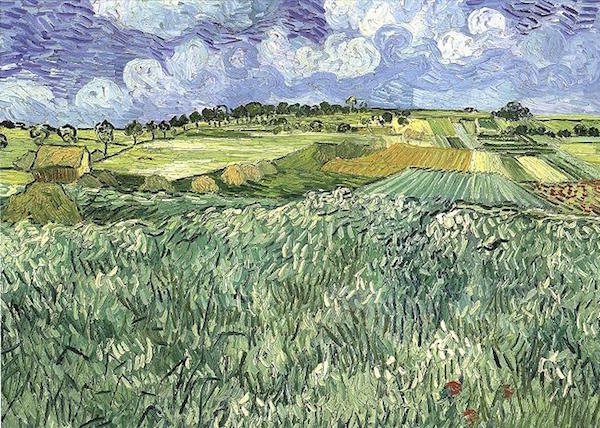Art World
Was van Gogh Killed? New Research Says He Was Shot
Pulitzer Prize-winning biographers say he was shot by a man called René Secrétan.
Pulitzer Prize-winning biographers say he was shot by a man called René Secrétan.
Lorena Muñoz-Alonso

The troubled life and demise of Vincent van Gogh follows a well-known trajectory: the precocious genius, the art world’s indifference, the onset of angst and madness, and then, tragically, his suicide at age 37.
Or so we thought. But according to the groundbreaking research of Pulitzer Prize-winning biographers Steven Naifeh and Gregory White Smith, the painter didn’t shoot himself: he was killed. When they first exposed this theory in their 2011 biography Van Gogh: The Life, it was viciously attacked and contested. Rewriting history is not an easy task.
Now, in a thrilling article published in the December issue of Vanity Fair, the writers substantiate even further their controversial theory, which challenges the deep-seated assumptions about the (now) revered Dutch artist.
According to Naifeh and White Smith’s research, van Gogh was shot accidentally by a man called René Secrétan, who broke a lifetime of silence after seeing Vicente Minnelli’s van Gogh biopic Lust for Life (1956), in which the painter is depicted as killing himself in the woods surrounding the French town of Auvers, just outside Paris.
Secrétan confessed he had led a gang of teenage hooligans who enjoyed getting drunk and bullying the tortured artist. Although he never admitted to having shot van Gogh, Secrétan did declare that he used to dress up as Buffalo Bill and brandish a malfunctioning pistol he got from the keeper of the Ravoux Inn, where the painter lived.
According to Naifeh and White Smith, two days before van Gogh’s death (July 29, 1890), a stray bullet shot from afar hit the painter in the abdomen while he was out in the fields of Auvers. Because it didn’t hit his vital organs, it took over 29 agonizing hours to kill him.
None of the reports of his death mention the word suicide, only that he had “wounded himself.” No one admitted to having found the gun, and the doctors could not really make sense of his wounds.

Vincent van Gogh, Plain Near Auvers (1890). Courtesy of the Neue Pinakothek, Munich.
A few days before the shooting, van Gogh had placed a large order of paints, and on the morning of the day he died, he had sent an upbeat letter to his brother Theo, with an optimistic take on the future. Crucially, no suicide note was ever found.
Why did the suicide version take such a strong hold, then? Well, it simply provided a more logical narrative. Van Gogh’s earlobe episode, which had happened two years earlier, plus his history of nervous breakdowns and alcoholism, made him the perfect artist maudit: a troubled, unpredictable, erratic genius.
Even friends of the artist, such as the painter Émile Bernard, liked to sensationalize van Gogh’s exploits. “My best friend, my dear Vincent, is mad,” he told an art critic in 1889. “Since I have found out, I am almost mad myself.”
The police investigated the death, but according to Naifeh and White Smith, no records survive. The suicide rumors, thus, provided a “better story,” and gained momentum throughout the 20th century by the sheer force of hearsay.
The version that Naifeh and White Smith provide doesn’t alter the fact that van Gogh had a tragic and premature death that could have been avoided. But it shows us a new picture of the painter: the picture of someone with hopes, who believed in his art, and who died by accident. If only he could have seen how his paintings would come to be regarded.